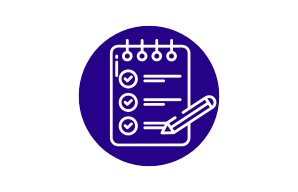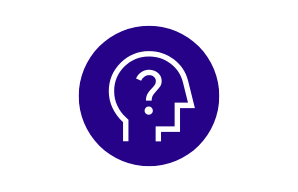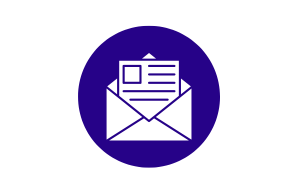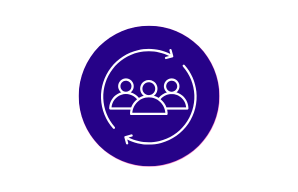Cristina Polo, NeurotechEU student: “There are many people from different areas working towards the same goal”
26 June 2024
The University of Reykjavik –a member of the NeurotechEU alliance– held the Summer School on EEG Functional Connectivity 2024 last May
Cristina Polo and Paula Soriano are students of the Doctoral Programme in Industrial and Telecommunications Technologies (TECNIT) of the Miguel Hernández University of Elche (UMH). Both attended the NeurotechEU Summer School on EEG Functional Connectivity 2024, held at the University of Reykjavik, in May 2024. This activity aimed to enable students to acquire the essential skills to analyze and understand the human brain’s dynamic complexities through electroencephalography (EEG).
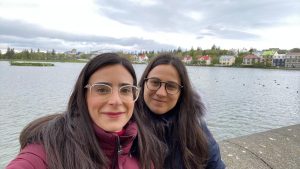
Paula Soriano and Cristina Polo (left to right), students of the Doctoral Program in Industrial and Telecommunications Technologies during their stay in Reykjavik
Cristina Polo has a degree in Mechanical Engineering and Industrial Electronic Engineering and Automation and a master’s in Automation and Robotics. She is currently part of the Brain Machine Interface Systems Lab (BMIsLab) research group of the UMH where she carries out her research work on the development of BMI for the control, design, and construction of exoskeletons. “In the future, I would like to continue working in the branch of Neuroscience, since it is a field that I am passionate about and I believe that there is still much to discover and research,” says PhD student Polo.
For her part, Paula Soriano graduated in Biomedical Engineering and completed the master’s in Robotics at UMH, where “research in medical robotics is very strong,” according to the doctoral student. She is currently working on her thesis on BMI research to control exoskeletons and help others with her work. In the future, she would like to contribute to making BMIs a common and regular therapy in hospitals.
After three days of immersive learning at the Institute of Biomedical and Neural Engineering at the University of Reykjavik—which coincided with the seventh meeting of the NeurotechEU Council of Rectors—the doctoral students share their experiences.
What made you decide to apply for one of the positions?
Paula: What caught my attention was the focus on brain connectivity, as it is something we don’t work with or see daily in our lab, so it complements my training in EEG.
How would you describe your experience at the Summer School in three words?
Cristina: Well, I would say: intense, enriching, and informative.
Paula: For me, it was surprising, valuable, and again, informative. Surprising because everything was very different, including the city itself; and valuable because we took away some ideas to apply and test here.
Paula, are you referring to the equipment they have?
Not just the equipment, but also the subject matter of the course. It’s a topic that has nothing to do with what we generally work on.
Was there anything about the course that surprised you? Anything you didn’t expect?
Cristina: I really liked the style of their facilities. I also work with 3D printing, and their facilities are much more advanced. Additionally, they work with EEG, just as we work with a part of design. So you realize that they have parallel lines of work, not only focusing on neuroscience but also on design. And I really liked that.
Paula: I was really fascinated by a platform they have created to simulate vertigo in people and detect some pathologies that are difficult to detect in people with cognitive impairments.
What does this ‘simulator’ consist of?
Paula: Let’s say a person stands on the platform and through a screen, they see as if they were on a boat. The platform moves with the rhythm of the waves that move the boat. But there comes a point where the platform stops, yet the person continues to feel like they are moving. Some people got on and tried it, and it was quite striking that they used a motion simulator to detect Parkinson’s and motion sickness, for example, in people who work on ships.
How was the course organized?
Cristina: The three days started with a few hours of theory, followed by practical sessions related to the theory we had covered.
Paula: On the first day, we had a workshop on the EEG cap they use. We divided into two groups, and while some of us were in the workshop, the others visited the facilities, and then we switched.
About the cap you mentioned, which one did you try?
Paula: It is an ANT Neuro, specifically, we used the waveguard™net model. It’s a kind of net that contains the electrodes, which are wet and work with a saline solution.
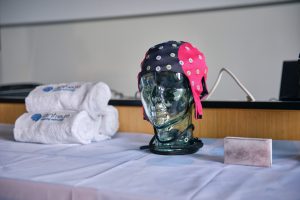
EEG ANT Neuro cap used during Summer School 0n EEG Functional Connectivity 2024 at Univeristy of Reykjavík
Were you able to use the cap from the first day?
Cristina: Yes, but generally, the second day was much more hands-on. We had more time to tinker with the cap and its equipment. Let’s say they gave us some exercises to carry out, and we could try them, doing it ourselves with their help.
Paula: Yes. By the end, you had built everything they had explained in the morning.
Did the Summer School make you rethink the trajectory of your career? Or has it influenced your long-term goals in any way?
Cristina: I enjoyed the working atmosphere there, something I would like to stay connected with. There are many people from different areas working towards the same goal. The Summer School is an experience I would recommend to everyone beyond students and professors in Neuroscience. It’s truly exciting to see so many people striving to understand and decipher the complex mechanisms inside our heads.
Paula: In my case, I echo what I mentioned earlier: the ideas that came to me while I was there. Not so much about rethinking my long-term career, but things to work on or try. Besides the classes taught, meeting people from different places dedicated to such varied branches of neuroscience is very enriching and brings great ideas.
